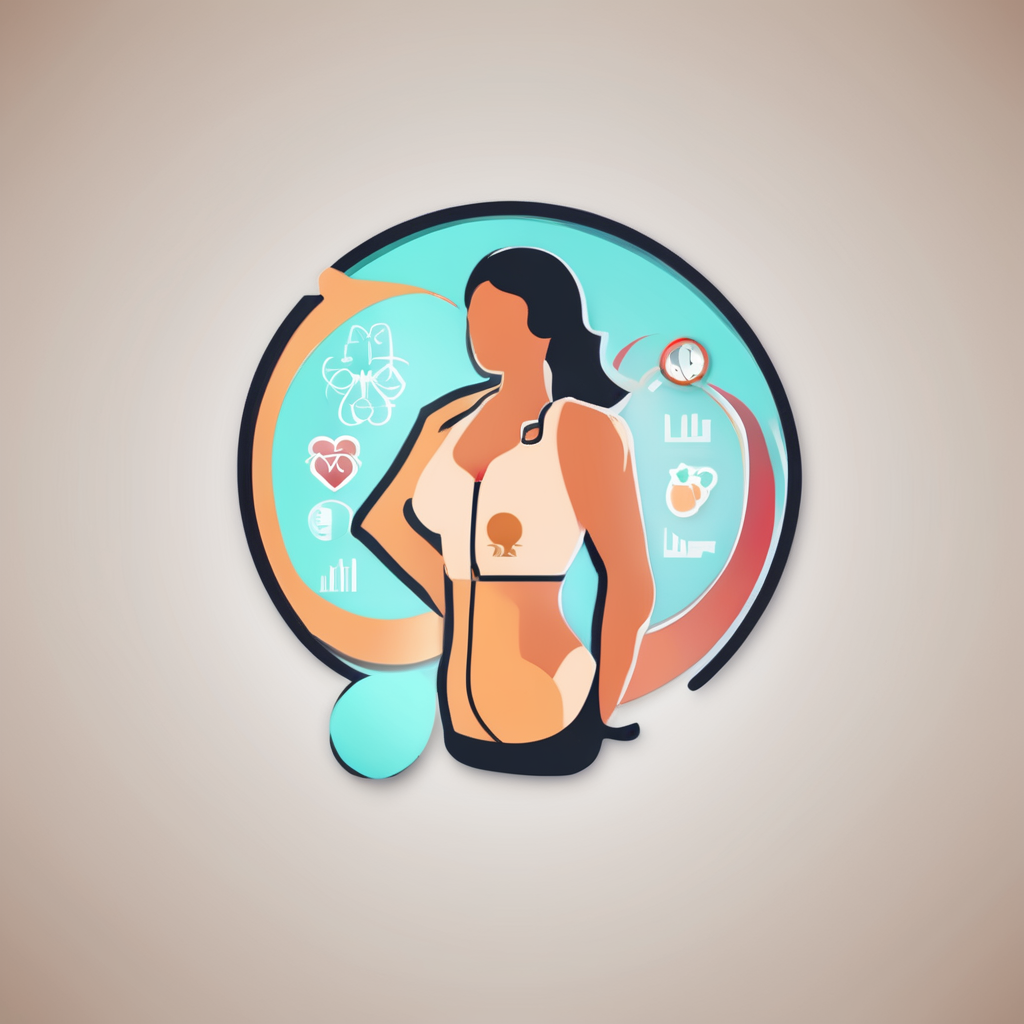Safety Considerations for Postnatal Fitness
When considering postnatal safety in exercise, it’s crucial to prioritize your well-being. Consulting a healthcare provider before embarking on any postpartum exercise is notably essential. This step ensures any concerns specific to your recovery and health are addressed. Providers can offer recovery guidelines tailored to your unique situation, particularly vital after childbirth.
Understanding when your body is ready for exercise is another pivotal aspect. Recognising physical signs, such as reduced bleeding and no pain during daily activities, can indicate readiness for postpartum exercise. Education on these signs is key to ensuring you don’t rush into activity too soon.
Also read : Top Strategies for Effectively Managing Restless Leg Syndrome: Unlocking Relief and Comfort
Moreover, exercise modifications should be tailored based on the type of childbirth experienced. For those who underwent a vaginal delivery, light activities like walking can be resumed relatively soon after birth, often within weeks. In contrast, a cesarean section requires patience and care. Post-cesarean exercise should initially focus on gentle core engagement and only proceed with more intense activities once you are cleared by a healthcare provider.
By understanding these factors and taking careful precautions, you can effectively regain fitness while ensuring safety and comfort during your recovery period.
Have you seen this : Experience salon-quality foot care with an electric foot grinder
Recommended Types of Exercises
Choosing the right postpartum exercises can be crucial for a healthy recovery after childbirth. When considering exercise types, one should focus on a balanced mix of cardio, strength, and flexibility routines tailored to a new mother’s needs. Each offers unique benefits that contribute to overall well-being.
Cardio Options
Engaging in low-impact cardio activities is highly recommended for new mothers as it promotes cardiovascular health without causing excessive strain. Walking, cycling, or swimming offer gentle ways to elevate heart rate while minimizing joint stress. These exercise types are ideal in helping mothers ease back into fitness routines.
Strength Training
For rebuilding muscles after childbirth, focus on key strength exercises like squats, lunges, and light weightlifting. These activities help restore muscle tone and support overall strength, reducing the risk of injury during daily tasks. Start with lighter weights and gradually increase resistance as fitness improves. Avoid exercises that put strain on the abdomen initially.
Flexibility and Core Stability
Improving flexibility and core stability is crucial for overall support and mobility. Yoga and Pilates are ideal options that enhance flexibility and strengthen core muscles, offering stability to the back and pelvis. Achieving flexibility and core strength aids in better posture and reduces back pain. Prioritize exercises that focus on these aspects for a comprehensive fitness approach.
Duration and Frequency of Workouts
When incorporating exercise into a postnatal schedule, it’s essential to balance exercise duration and workout frequency. Initially, it’s advisable to start with short workouts, perhaps around 10 to 15 minutes. This duration allows new mothers to ease into fitness without overwhelming their bodies.
Listening to your body is crucial. As you become comfortable, gradually increasing the exercise duration by 5-minute increments can ensure a gentle progression. Eventually, aiming for 20 to 30 minutes per session may be optimal, contingent on personal comfort and recovery rates.
Considering workout frequency, a balanced approach could involve engaging in three sessions per week. For a postnatal schedule, Monday, Wednesday, and Friday might be practical days. This schedule provides ample rest in between sessions, allowing the body to recuperate.
Here’s a sample weekly fitness routine:
- Monday: 15 minutes of gentle yoga
- Wednesday: 20 minutes of brisk walking
- Friday: 15-20 minutes of low-impact aerobics
This routine fosters consistency and gradually builds endurance. As strength and stamina improve, mothers can experiment with extending workout duration and increasing frequency, ensuring both are enjoyable and sustainable.
Nutritional Advice for New Mothers
Navigating postpartum nutrition can be a journey. Healthy eating, supported by strategic meal planning, is vital to aid recovery and maintain energy levels during this transformative period.
Nutrient-Dense Foods
Focus on incorporating a variety of nutrient-dense foods into your diet. Key nutrients such as iron, calcium, and omega-3 fatty acids play crucial roles in postpartum recovery and overall health. Lean proteins, leafy greens, and fatty fish are excellent sources. These foods not only support physical recovery but can also contribute to mental well-being.
Hydration Tips
Staying hydrated is particularly essential if you’re breastfeeding, as your fluid needs increase. Aim for at least 8 glasses of water a day. Herbal teas and fruits with high water content, like watermelon, can also help meet your hydration needs. Hydration is crucial for maintaining milk production and overall energy levels.
Meal Preparation Strategies
Effective meal planning can significantly ease the transition into motherhood. Consider preparing meals in bulk and freezing them in portions for quick access. Simple, balanced meals that incorporate whole grains, proteins, and vegetables can be prepped in advance. This strategy ensures you always have healthy options available, minimizing stress and time spent in the kitchen. Encouragingly, meal prepping can instil a sense of control and simplify daily routines.
Mental Well-Being and Self-Care
New mothers often find themselves navigating the complexities of postnatal recovery, where mental health plays a pivotal role. It’s essential to prioritise self-care practices to nurture both body and mind during this transformative period. Practical self-care strategies can become a cornerstone of daily life, aiding in alleviating postpartum stress and promoting emotional balance.
Begin with simple, impactful practices like setting aside time for mindfulness or deep-breathing exercises. These techniques offer a calming effect, allowing new mothers to centre their thoughts and reduce anxiety. Additionally, engaging in light physical activities, such as walking or gently stretching, can significantly boost mood by releasing endorphins.
For those experiencing more profound emotional challenges, accessing reliable resources for emotional support is crucial. Connecting with support groups, whether in person or online, provides a sense of community and understanding that can be immensely comforting. Moreover, professional counselling services are invaluable for anyone facing postpartum depression, offering tailored strategies to navigate complex emotions.
Remember that seeking help is a proactive, courageous step toward establishing a robust foundation for mental health. Taking action, embracing supportive networks, and implementing self-care routines contribute significantly to overall well-being during this pivotal life stage.
Tips from Fitness Experts
Navigating the postpartum period can be challenging, but expert advice offers clarity. Insights from certified postnatal trainers emphasise the importance of tailored routines. One key recommendation is to start with low-impact exercises, gradually increasing intensity as your body readjusts. They suggest modifications such as seated workouts for those at baseline fitness levels.
Understanding your needs is crucial; postpartum coaching helps pinpoint which areas need strengthening, such as the pelvic floor or core muscles. Experts stress the importance of listening to your body and being patient with progress.
Avoid common pitfalls: overexertion is a frequent misstep for new mothers eager to regain pre-pregnancy fitness. Rest periods and proper hydration should not be neglected, as they play integral roles in recovery.
Consider these practical fitness tips:
- Start with basic movements, like gentle stretching.
- Modify advanced exercises to accommodate current stamina.
Fitness levels vary widely postpartum, so adopt a gradual approach. By integrating expert advice with personal observations, newcomers and seasoned athletes alike can enjoy positive, sustained results. Postpartum doesn’t mean slowdown; it’s a call to adapt wisely, offering an opportunity to forge healthier habits.
Sample Workout Plans
Exploring diverse workout plans can cater to various fitness levels and goals. Discover how a well-structured regimen can guide you through the journey from beginner to advanced stages.
Beginner Sample Plan
A gentle introduction to the world of fitness is crucial for beginners. Kick off your Monday with low-intensity cardio such as brisk walking or cycling. On Wednesdays, incorporate basic strength training exercises, focusing on body weight exercises like squats and push-ups. By Friday, it’s time to try core exercises such as planks.
Intermediate Sample Plan
Transitioning to the intermediate stage means amping up the intensity. Start your week with a mix of cardio and strength training, alternating between high-impact cardio sessions and weighted resistance training. By mid-week, integrate circuits comprising lunges, pull-ups, and plank variations. Ending the week with a yoga or pilates session will help maintain flexibility.
Advanced Sample Plan
For those who’ve returned to their peak fitness levels, advanced plans offer the thrill of challenge. Tackle your week with interval training, incorporating sprint sessions or intense cycling on alternate days. Incorporate complex lifts like deadlifts and bench presses to build strength. Finish the week with endurance activities, such as long-distance running or advanced HIIT workouts.
Addressing Common Postnatal Concerns
Navigating the journey of postnatal recovery can be challenging, with postnatal issues like diastasis recti and pelvic floor weakness affecting many new mothers. Diastasis recti, characterized by the separation of abdominal muscles, is a common concern that impacts core stability and appearance. To manage it, focusing on gentle core-strengthening exercises can be beneficial. Pelvic floor exercises, such as Kegels, are essential to restore pelvic floor strength, which can prevent incontinence and improve overall health.
Fatigue and sleep deprivation are recovery challenges shared by new parents. Adopting sleep strategies like napping when the baby sleeps and sharing nighttime duties can help manage common concerns related to energy levels. Creating a restful environment and limiting screen time before bed also contributes to better sleep quality.
Postpartum, women experience a myriad of physical and emotional changes. Hormonal fluctuations can lead to mood swings, anxiety, or even postpartum depression, underscoring the need for a strong support system. Eating a balanced diet and engaging in moderate exercise can aid recovery and enhance mood stability. Understanding these postnatal issues and taking actionable steps can make this transitional period smoother and more manageable.











